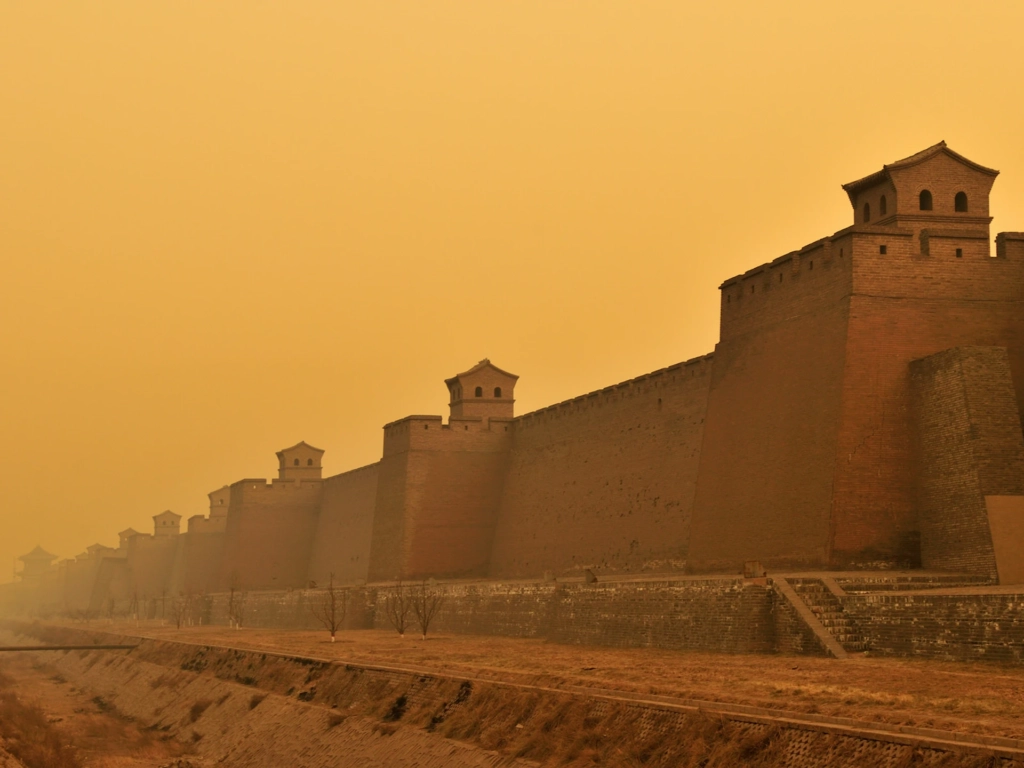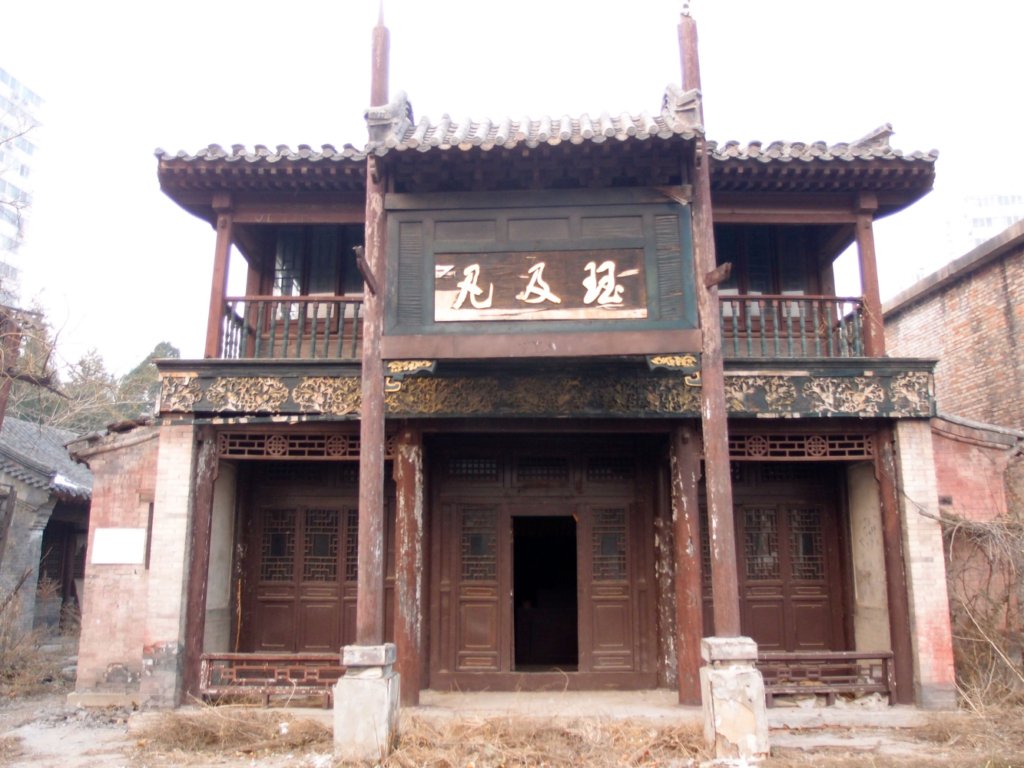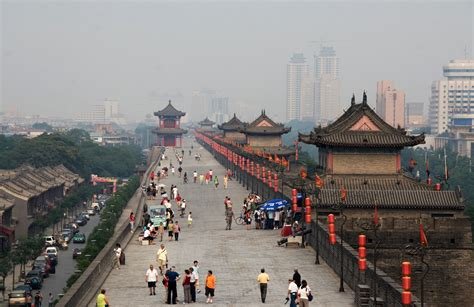Explore the evolution of urbanization in ancient China, from Neolithic origins to influential capitals and the engineering feats that shaped city life.Delve into the captivating tapestry of history as we explore the ancient cities of China, where every cobblestone and wall whispers tales of ingenuity, power, and cultural grandeur. As far back as the Neolithic period, these urban wonders began to shape a civilization that would profoundly impact the world. This journey through time reveals the gradual rise of urbanization in a society renowned for its structured cities and influential capitals that orchestrated the rhythms of Chinese life. We will marvel at the engineering feats that erected these cities and ponder the cultural importance of their imposing walls, which stood as symbols of both protection and prestige. Alas, we will also reflect on the reasons behind their eventual decline and abandonment. Join us as we unearth the layers of the past and uncover the secrets of China’s ancient urban landscapes.
The Neolithic Origins of Chinese Cities

The Neolithic period, a pivotal era roughly dated from 10,000 to 2,000 BCE, marks the dawn of Chinese civilization and the gestation of what would burgeon into the complex urban centers we associate with ancient China. The cradle of this development lay along fertile river basins, where the interplay between burgeoning agricultural practices and evolving social structures necessitated the establishment of permanent settlements. It was within these embryonic communities that the seeds of Chinese cities were sown, nurtured by the hands of those who first tamed the wild grains and channeled the waters that fed them.
Uncovering the remnants of these ancient sites, archaeologists have marveled at the precocity with which these nascent communities displayed characteristics typical of urban development. The architectural vestiges of housing, granaries, and communal structures unearth artful mastery over their environment. A key feature of these early settlements is the impressive ceremonial architecture unearthed, suggestive of a society steeped in ritual and burgeoning bureaucracy – a society where the concept of a ‘city’ began to take a definitive shape, marked by sophisticated social stratification and administrative complexity.
In profound ways, the Neolithic origins of Chinese cities reflect a transition from mobile hunter-gatherer bands to rooted agrarian communities, which in time evolved into intricate urban tapestries. These developments were mirrored in the societal metamorphosis; the density of populations within these proto-cities catalyzed the exchange of ideas, fostering advancements in technology and culture, igniting the engine of innovation that would eventually revolutionize every aspect of human endeavor – from the production of food to the creation of majestic city-states.
The archaeological evidence from this period also speaks to a long tradition of city planning. The organized layout of buildings and roads, along with the management of resources such as water and grain, suggests that the governance of these early settlements was already aligned with sustaining urban life. Thus, the Neolithic origins of Chinese cities encapsulate a turning point, an era wherein humanity took its first collective steps towards a future dominated by urban landscapes, setting the stage for the flourishing of one of the world’s oldest continuous civilizations.
The Rise of Urbanization in Ancient China

The phenomenon of urbanization in Ancient China marks a pivotal transformation in the chronicles of human civilization. The emergence of intricate urban centers from the foundational settlements during the Neolithic era is a testament to the innovative and societal evolution of ancient Chinese societies. The driving forces behind this monumental shift resonate through the annals of history, encapsulating the convergence of agricultural affluence, burgeoning population densities, and the strategic imperatives of defense and administration.
As the cradle of Chinese civilization, the fertile plains of the Yellow River provided more than just sustenance; they became the incubators of socio-political complexity and urban development. The fabric of Ancient Chinese cities was woven with the threads of economic specialization, enabling a division of labor that transcended the subsistence activities and birthed a new echelon of artisans, traders, and bureaucrats. These ancient urbanites erected the very pillars upon which rested the power and prestige of dynastic rule, forever altering the landscape of human settlements.
The growth spurt of urbanization can be captured in the expanding boundaries and functional diversification of cities like Anyang and Ying, which stood as tangible representations of centralized power and cultural opulence. Intricacies of urban planning, from the grid-like layouts to the grandiose palace complexes, reflected not only the technological capability but also the hierarchical worldview that ancient Chinese statecraft espoused. These cities, ensconced within formidable city walls, were the heartbeats of an ever-dynamic and complex economic system, acting as hubs of commerce, craftsmanship, and governance.
Despite the grandeur, urbanization in Ancient China wasn’t devoid of challenges. The very density that enabled cultural and economic efflorescence also sowed the seeds of susceptibility to social strife, resource depletion, and the machinations of war. The quest for maintaining equilibrium within the bustling, crowded urban spaces eventually led to sophisticated administrative mechanisms, evidencing the ingenuity of ancient Chinese urban planners. This historical narrative of urban rise reflects a universal human journey from disparate agrarian communities to the intricate nexus of ancient metropolises that would lay the groundwork for modern civilization.
The Influential Role of Ancient Capitals

The influential role of ancient capitals in China cannot be understated, as they were not only power seats of the dynasties but also cultural and economic hubs that shaped the civilization’s trajectory. These capitals, etched into the very core of Chinese history, were more than mere political centers; they were throbbing hearts where the veins of trade, art, and philosophy converged and flourished. The significance of these ancient capitals reverberates through the annals of time, their legacy captured in enduring literary works, grand architectural feats, and the continuing traditions that find roots in their erstwhile glory.
When dissecting the multifaceted impact of ancient Chinese capitals, one can’t overlook their strategic roles in territorial expansion and diplomatic prowess. These cities served as epicenters from where emperors projected their might and influence across vast expanses, leaving indelible marks shaped by complex networks of alliances, sophisticated bureaucracy, and the unyielding spirit of Chinese governance. At the zenith of their power, these capitals commanded an almost mythical status, their names synonymous with the strength and wisdom attributed to the empires they represented.
The societal imprint of these capitals is also of paramount importance, with their designs reflecting the philosophical and cosmological beliefs of the times. Ancient capitals like Xi’an, once known as Chang’an, were laid out based on feng shui and the concept of a cosmic order, which testified to the profundity with which these cities were interwoven into China’s cultural fabric. The meticulous planning of thoroughfares, residential quarters, and imperial palaces within these capitals speaks volumes about the ingenuity and foresight of ancient city planners, who set benchmarks that resonate in urban planning principles to this day.
Finally, the educational and spiritual influence of ancient capitals cemented their status as pinnacles of enlightenment. With the establishment of academies, libraries, and temples, these metropolises nurtured generations of scholars, poets, and philosophers, whose thoughts and discoveries propelled Chinese civilization forward. The diffusion of Confucianism, Buddhism, and Taoism from these nerve centers out into the world illustrates the sheer magnitude of influence that ancient Chinese capitals held, not just in the physical sense but as lighthouses of human progression and introspection.
The Engineering Marvels of Ancient Chinese Cities

The ancient Chinese cities were a hotbed for breathtaking engineering feats that continue to fascinate historians and engineers alike. These marvels were not only functional infrastructure but also tangible testaments to the ingenuity and foresight of ancient Chinese urban planners. For instance, the construction of elaborate and extensive city walls were feats of military engineering designed to ward off invasions and protect the denizens within. These walls, often made of rammed earth, wood, or stone, were constructed with such precision and strength that remnants still stand today, centuries later.
Not only did the defense systems of these cities showcase significant engineering prowess, but the urban layout within the city walls also reflected a sophisticated understanding of city planning and civil engineering. The grid layouts of streets and districts facilitated efficient movement and administration, highlighting the importance placed on the functionality and aesthetics in the design of ancient Chinese cities. Public works such as bridges, canals, and irrigation systems further demonstrate advanced engineering knowledge, ensuring these metropolises thrived both economically and socially.
Beyond functionality, the ancient Chinese also mastered the beautiful blend of engineering with nature. The harmonious integration of gardens, pavilions, and the natural topography within urban settings illustrated a highly evolved approach to engineering — one that valued balance with the natural environment. Techniques such as Feng Shui were often applied to align buildings and streets with cosmic forces, believed to bring harmony and prosperity to the inhabitants of these ancient cities.
A discussion on the engineering marvels of ancient Chinese cities would be incomplete without the mention of the intricate systems of water management that were pivotal in maintaining these large urban centers. Sophisticated networks of canals and dams, such as the Dujiangyan irrigation system, which is still in use today, revolutionized agriculture and shaped the development of the region. This water management technique not only illustrates ancient China’s engineering talent but also their sheer resilience and innovation in the face of natural challenges.
The Cultural Significance of City Walls in Ancient China

The monumental city walls of Ancient China were much more than mere fortifications; they represented the zenith of cultural significance and civic pride for the people residing within them. Constructed from a variety of materials pertinent to the local geography—ranging from tamped earth to the advent of brick and stone—these robust structures symbolized a city’s prestige and the civilization’s mastery over its environment. The walls not only reflected the strength and ingenuity of a city but also served as a canvas where the stories of the people, their leaders, and their collective identity were etched.
In the societal structure of Ancient China, the city walls were considered the embodiment of order and stability, distinguishing the chaos of the outside world from the harmonious life within. They defined the city’s borders physically and metaphorically, encapsulating the cultural and administrative heart of the urban center—where rituals, trade, governance, and social interaction flourished unhindered by external threats. Each layer of the wall bore testament to the city’s resilience against invasions, natural disasters, and the passage of time.
The design and aesthetics of these ancient city walls were paramount, with gateways acting as the mouthpieces of the city’s character and vitality. The grandeur of the gates—often named after cardinal virtues, celestial bodies, or historical events—reflected a commitment to blend functionality with spiritual and cultural symbolism. Gate towers rose high above the walls, providing vantage points for defenses and reinforcing the importance of the city as a nexus of power in the tapestry of Chinese civilization.
As centuries passed, the cultural significance of the city walls in Ancient China transcended their original defensive purposes, becoming ingrained in the minds of poets, scholars, and everyday citizens as emblems of their heritage. Even as time has eroded the physical form of many of these great walls, their legacy continues to permeate China’s historical narrative, reminding us of a time when the boundaries between civilization and wilderness were as solid and as enduring as the walls that guarded the cradle of Asian urban culture.
The Decline and Abandonment of Ancient Chinese Cities

Exploring the reasons behind the decline and abandonment of ancient Chinese cities requires a multifaceted examination of historical events, environmental changes, and social upheavals. Throughout the millennia, many once-thriving metropolises gradually succumbed to the relentless march of time, with some of the reasons rooted deep in the politics and warfares that fetched the destiny of dynasties. It was not uncommon for cities to fall out of favor with the emergence of new power centers, leading to gradual depopulation and, eventually, their poignant desertion.
Furthermore, natural disasters such as floods, droughts, and earthquakes played a significant role in rendering certain areas inhospitable, precipitating the abandonment of urban settlements in ancient China. The Huang He, or Yellow River, for example, is known for its catastrophic floods, which have historically led to large-scale human catastrophe and the subsequent abandonment of nearby urban centers. In such ways, nature’s unpredictable temperament was an undeniable force that shaped the historical landscape of Chinese urbanization.
Economic shifts also heralded downturns for various cityscapes across ancient China. As trade routes evolved and new resources were discovered, some cities found themselves sidelined, bypassed by the lucrative flow of trade and commerce. This economic obsolescence, exacerbated at times by overtaxation and corruption, led to the emigration of inhabitants seeking prosperity elsewhere, leaving behind echoes of commercial bustle in the form of empty marketplaces and silent workshops.
Last but not least, cultural transformations played their part in the cessation of urban prominence. With the construction and reverence of new cultural sites, the spiritual and administrative significance of certain cities waned. As some cities were associated with particular dynasties or religious practices that fell out of favor, their cultural significance diminished, adding yet another layer to the intricate tapestry of reasons for which ancient Chinese urban centers were eventually forsaken, transforming them into the enigmatic ruins that inspire wonder and archaeological inquiry in the modern era.
Frequently Asked Questions
What evidence do we have of Neolithic origins in Chinese city development?
Archaeological findings such as ancient pottery, dwellings, tombs, and city layouts provide evidence of Neolithic settlements in China, offering insights into the early stages of urban development in regions like the Yellow River and Yangtze River valleys.
How did urbanization progress during ancient China?
Urbanization in ancient China progressed through the establishment of organized states and the development of trade networks, leading to the growth of cities as economic, political, and cultural centers, particularly during the Zhou, Qin, and Han dynasties.
Can you name some influential ancient capitals in Chinese history?
Some influential ancient capitals in Chinese history include Xi’an, known as Chang’an during various dynasties, Luoyang, Nanjing, and Beijing. These cities served not only as political and administrative hubs but also as crucibles for cultural and intellectual advancements.
What kind of engineering feats were accomplished in ancient Chinese cities?
Ancient Chinese cities showcased remarkable engineering feats including the construction of grand palaces, complex city planning, extensive canal systems for transport and irrigation, as well as the building of massive defensive walls and fortifications.
Why were city walls so culturally significant in ancient China?
City walls in ancient China were symbols of power and protection, denoting the strength of a city and its rulers. They were also significant in defining city boundaries, safeguarding inhabitants, and were imbued with spiritual meaning as they were often associated with cosmological concepts and rituals.
What factors led to the decline and abandonment of some ancient Chinese cities?
Factors that led to the decline and abandonment of ancient Chinese cities include political upheaval, economic decline, natural disasters, invasions, and environmental changes. Sometimes relocations of the capital city were strategic decisions by new dynasties, leading to the decline of previous urban centers.
What impact did the decay of these ancient cities have on modern China?
The decay of ancient cities in China led to the rise of new urban centers and influenced modern city planning, while the ruins provide valuable archaeological sites for understanding Chinese cultural and historical heritage, drawing researchers and tourists alike.


